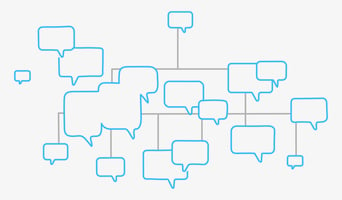Do you believe organizational culture results from mindsets or from behaviors? The implications are fundamental and we strongly recommend one over the other.
Any definition of organizational culture can be categorized into two distinct lines of thought.
One believes that organizational culture is a result of mindsets, of what people think and understand and believe to be true - of what is in their heads.
The other line of thought believes that organizational culture is a result of behaviors, of what people (actually) do or don’t do.
The difference lies at the heart of Karl Weick’s observations about thinking and acting. For example, when action and sensemaking on that strategy become a source of strategy, in contrast to elaborated thinking and analysis. Action results in strategy, rather than continued analysis and thinking about what the strategy should be.[1] The essence of the difference is well captured by the assertion that “people are much more likely to act their way into a new way of thinking than to think their way into a new way of acting”.[2] At Management Kits, we completely agree.
Why is this difference in defining organizational culture important? Because the school of thought you follow will have consequences for how you try to change, or not change, organizational culture. And it will influence how you think about culture as an asset or as a liability in supporting organizational change and transformations.
Think of the following examples of organizational culture and organizational change to illustrate the difference.
Organizational culture and leadership: an example of rethinking the role of hierarchy in organizing
Imagine a case where an organization tries to change in order to empower its employees, enable more decentral decision-making, give more power to self-organized teams, and thus rethink the role of hierarchy. The goal is to build a more agile and adaptive corporate culture.
The “mindset school” of organizational culture would probably approach this change as a matter of “making the case for change”, “communicating”, and “teaching the new model”, with the assumption that people only need to understand why the change makes sense and it will therefore happen.
The “behavior school” of organizational culture, on the other hand, will determine what kind of behaviors lead to organizations with hierarchical culture, and what behaviors lead to more decentralized and collaborative decision-making. This approach won’t be about the idea behind the change, but rather about how a change could be recognized by observing the way people behave, move, dress, talk to each other, etc.
In these two cases, the approach to organizational culture development will differ fundamentally. In the behavior case, any organizational development intervention regarding corporate culture will choose methods that target behavior change and will describe the organizational culture in terms of behaviors that enact the hierarchy.
While the case for change through careful communication will always be a relevant element of managing organizational change and building corporate culture, we at Management Kits strongly believe in the effectiveness of the behavior school of thought. Culture understood as the explicit and implicit “rules of the game” are best described, and changed, by focusing on concrete behaviors and patterns of acting and speaking.
Management Kits provide research-based guidance to support effective organizing
References
[1] Karl E. Weick (2001), Making Sense of the Organization, Blackwell, p. 353f.
[2] Richard T. Pascale and Jerry Sternin (2005), Your Company’s Secret Change Agents, Harvard Business Review, May 2005 Issue, p. 9.



